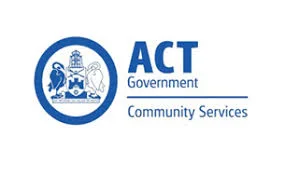Here are some examples of recent projects we have been involved with using the Collaboration Rubric® and the concepts and structures on which it is built.
Review of the New south wales, Hunter New England, Local Health District’s Clinical Networks and Streams Program
Hunter New England Local Health District, New South Wales, June 2016
The Review sought to understand how HNE Health can further support Clinical leaders and senior managers to increase high value health care All phases of this Review were informed by the Collaboration Rubric®. The conceptual framework of the Rubric® was used to design the data collection instruments and to frame the analysis.
Evaluation of Assessment for Learning – Supporting Early Years Networks Professional Learning Program
Victorian Curriculum and Assessment Authority
The Assessment for Learning – Supporting Early Years Networks (AFLSEYN) Program uses a network-based approach to advance assessment practice. The AFLSEYN program uses a network-based approach to advance assessment practice. Nine networks were established in 2015 across Victoria. The Collaboration Rubric® formed part of an evaluation of the Program which examined the implementation of the network approach.
Development of Relational Agency Scale
Victorian Curriculum and Assessment Authority
We were commissioned to develop a Relational Agency Scale to underpin the evaluation of relational agency in the VCAA’s Early Years Networks. Relational agency is characteristic of interaction which enables staff from different professional backgrounds to work together towards a joint goal of providing the best possible services to clients they have in common.
Building Child Youth and Family Services Networks in four regions of the Australian Capital Territory
Office of Child, Youth and Family Support, Australian Capital Territory Community Services Directorate, December 2013
Using the Collaboration Rubric® we were able to help build four new Child Youth and Family Services Networks. These Networks were established to improve the outcomes for families and their children by creating effective partnerships between non-government agencies.
Reviewing collaboration between members of Child Youth and Family Services Networks in four regions of the ACT
Office of Child, Youth and Family Support, ACT Community Services Directorate, October 2014
The ACT Government re-commissioned the use of the Collaboration Rubric® to continue to build the capacity of four ACT Child Youth and Family Service Networks. Building on the baseline established twelve months before, the Rubric® showed improvements across every indicator of Collaboration in each of the four Networks.
Report to the ACT Human Rights Commission on structures and organisational arrangements to support reform in ACT youth justice
ACT Human Rights Commission
We were commissioned to advise on organizational processes and structures required to implement reform in ACT Youth Justice. Using key foundational concepts in the Collaboration Rubric® our Report addressed questions about how the Youth Justice system could best deliver public value in the future to vulnerable children and young people and the organisational processes and structures needed to achieve good outcomes for these children and young people.
Cross Government Reform - The Federal Australian Family Relationship Service Providers working with State Child Protection agencies
Commonwealth Department of Families, Housing, Community Services and Indigenous Affairs and Attorney Generals Department
The aim of these three projects was to review the processes and models of collaborative practice currently in use by Australian Family Relationship Service Providers in working with state child protection agencies, and to identify the likely impacts of these practices, processes and models on the safety and well-being of children. These projects continued to deepen the concepts and evidence base for the Collaboration Rubric®
A focused literature review on inter sectoral collaboration to inform a desktop analysis of collaborative arrangements between the Commonwealth Family Relationship Services Program and Child Protection Services in NSW and Queensland
This work, undertaken with the Australian Catholic University, builds an understanding of collaboration in the context of the Family Relationship Services Program and Child protection systems.
Improving Collaboration between Family Relationship and Child Protection Systems in two States: New South Wales and Queensland: A Desktop Review
This project, under the auspice of the Australian Catholic University, identified the broad principles of possible future collaborative models between the Family Relationship Program (FRSP) and Child protection systems in New South Wales (NSW) and Queensland (QLD) and identified potential barriers, strengths, threats and opportunities to the development of such models.
The Victorian Community Linkages Project: Increasing collaboration between State and Commonwealth service systems to improve the safety and wellbeing of vulnerable children in Frankston–Mornington Peninsula and Wodonga
Using the foundational concepts in the Collaboration Rubric® the project described and analysed collaborative approaches between State funded agencies (Child Protection and Integrated Family Services, including ChildFIRST) and Commonwealth funded agencies (Family Relationships Services, including Family Relationship Centres) in two Victorian localities.
The ultimate purpose of the project was to achieve and measure improved outcomes for vulnerable children, young people and their families through increased service collaboration and systems integration.








